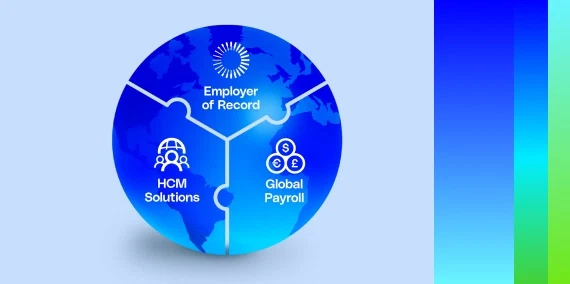If you want to stay ahead of the competition when growing your company in Finland, you’ll need a compensation and benefits plan that attracts the kind of skilled employees you need. At the same time, you’ll still need to meet all Finland compensation laws and stay within any restrictions for compensation and benefits.
Thankfully, you don’t have to figure it out alone. G-P can help by hiring employees on your behalf, handling Finland benefits management, and ensuring your company remains compliant with local labor laws.
Finland compensation laws
Finland laws don’t specify a minimum wage, but Collective Bargaining Agreements (CBAs) may provide minimum salary requirements for certain sectors. If employees work over their hourly limit, they are entitled to overtime of 50% for the first 2 hours and 100% for any hours over that. However, an employer can agree to exchange overtime wages for additional time off. CBAs, if they are applicable, may provide different terms regarding overtime work payments.
In Finland, employee bonuses are not mandated but are common. For example, a CBA may include a provision for a holiday bonus of around 50% of the pay for that annual holiday. Employers can pay this bonus to employees before or after the holiday.
Guaranteed benefits in Finland
When mapping out your Finland benefits management strategy, it is important to look at both statutory and supplemental benefits. Guaranteed benefits in Finland include annual leave that employees accrue over the time they work for the company. Employees initially earn 2 days of vacation for each month they work, which increases to 2.5 days for each month worked (until a maximum of 30 days of annual leave). However, a CBA could outline longer vacation entitlement.
Employees in Finland get health insurance through the country’s social security plan called the Social Insurance Institution. Pregnant employees are entitled to maternity leave of 40 working days, and each parent receives a quota of 160 days of parental leave, amounting to a total of 320 parental days for a couple. CBAs, if applicable, may provide different terms concerning specific leaves.
Finland benefits management
Another portion of Finland benefits management involves choosing what additional perks will help you attract and retain top talent. Employees are already insured for employment-based benefits such as an earnings-related pension, vocational rehabilitation, and more. The law also requires employers to give their employees occupational healthcare services.
Sourcing the best benefits can be difficult, especially when you aren’t entirely familiar with Finland’s employment laws. G-P ensures employees receive statutory benefits and can also advise on options for non-statutory benefits.
Restrictions for benefits and compensation
CBAs outline the majority of Finland’s benefits and compensation restrictions. When drafting an employment contract, companies must meet or exceed these requirements.
Finland competitive benefits planning
When you decide to scale your company in a new country, the team you hire will be integral to your success. With benefits planning, you can add a competitive edge to your company and encourage growth.
Finland employee benefits plans
Benefits are essential to developing your company in another country. While these provisions play a part in compliance, they’re also vital in terms of talent retention. Benefits packages show employees you care about their wellbeing. They can keep morale high, improve job satisfaction, and encourage job seekers to apply to your open positions.
While all companies are responsible for a series of required provisions, fringe benefits can truly set your company apart. Possible supplemental benefits can include:
- Holiday bonuses
- Transportation stipends
- Housing allowance
Required benefits
Employment laws in Finland detail a range of benefits and entitlements that every employer must provide for their employees. These requirements include:
- Paid annual leave
- Public holidays off
- Parental leave
- Social insurance contributions (including pensions, healthcare, social security, and unemployment benefits)
Designing employee benefits plans in Finland
With the country’s many required benefits, being competitive in the job market may feel challenging. When it’s time to design a benefits plan, you need to consider your company’s resources and what local employees need and expect from you. Finding the balance between these 2 factors will keep your company competitive and successful. The following steps can help you get started.
1. Evaluate company budget and goals.
During this first step, you need to understand your company’s earnings and expenses. It’s helpful to evaluate your company goals during this stage as well to determine how your benefits will contribute. For example, if you want to compete with leaders in your industry, you can create a similar benefits package to the ones offered by the top companies in the area.
2. Research employee needs and expectations.
Job seekers will apply for roles that offer generous benefits packages. If your company can uncover what employees need from their employers, you can use this information to your advantage. Conducting surveys of employees in your target area can help you understand employee needs.
Employees will also have expectations about benefits based on industry standards. You can learn about the common benefits in your industry by researching similar companies.
3. Make a plan based on your research.
With the information gathered, you can develop your benefits plan. Start by setting funds aside for the required benefits. You can then allocate the remaining budget to fringe benefits based on what employees want and expect from companies in your industry.
Average cost of benefits
The actual cost of benefits varies from company to company based on the provisions they offer. Many factors affect what benefits an employer provides, including industry, location, and company size. It’s helpful to allocate a percentage of company income to your benefits plan. We recommend around 25% in Finland.
A set percentage is advantageous because it scales with your company. As your revenue grows, you can provide more for your employees.
How to calculate benefits
Benefits calculations will also vary. Among the required benefits, such as social insurance, you can find information about calculations in the employment laws. For example, in the private sector, labor organizations determine an appropriate pension contribution each year. In 2023, pension contributions average 25.3% of employees’ monthly gross wage.
This total percentage is split between employees and employers. Employees under 53 or over 62 contribute 7.15% and 8.65% for employees between 53 and 62. Employers contribute 17.4% on average. Note that these contributions are unique to each industry and are subject to change each year.
How are employee benefits taxed in Finland?
The country deems any benefits from employment as taxable income. However, there are exceptions and regulations for specific fringe benefits. Provisions such as housing and meals will have an associated value, and this number is treated as income.
Exceptions to this rule include commuter passes and company bicycles. These provisions combined allow for up to EUR 3,400 of tax-free benefits. Bicycle-related income is tax-free until it exceeds EUR 1,200.
Employee health benefits plans
With country-wide universal healthcare, private health insurance packages are not required or common in Finland. Contributions to national health insurance support the universal healthcare system, and employers are required to contribute to this fund. Employees contribute 1.96% and employers provide 1.53%.
While health insurance is not mandated, the law does require employers to actively care for employees’ health and wellbeing.
Partner with G-P to build your everywhere workforce.
As your partner in global expansion, G-P will handle payroll and compliance, so you can focus on growing your team and scaling your business. Our market-leading Global Growth Platform™ is powered by the first fully customizable suite of global employment products and backed by the industry’s largest team of in-country HR and legal experts to streamline payroll management and help you offer competitive, compliant local benefits.
Learn more about our platform and request a proposal today.






